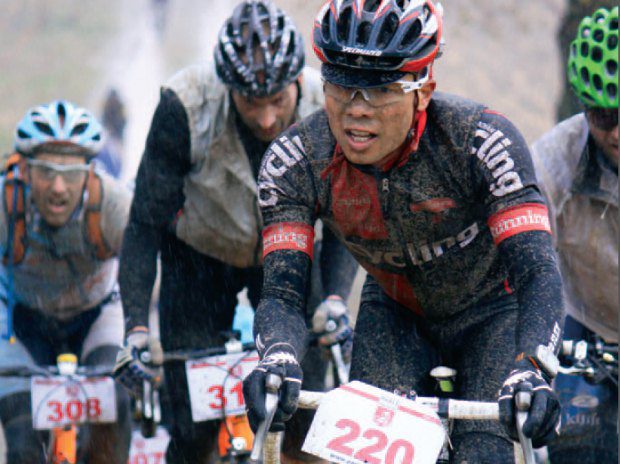Paris to Ancaster race turns 20
The Canadian classic tribute to Paris-Roubaix is aging well


Tim Farrar, the co-race director of Paris to Ancaster, admits that the start town of his race was chosen because it shares its name with a certain French capital. “Absolutely. Absolutely,” he says. “Paris-Roubaix tribute races are all over North America, all over the world. Everybody has a race that is an answer to Paris-Roubaix. Our only gimmick is that we actually start in Paris.”
While the Ontario race has Paris (population 11,763), it doesn’t have cobbles nor the distance of its French inspiration. Paris to Ancaster may also be much younger than Paris-Roubaix, but the Canadian event hits a milestone this year as it turns 20 years old on April 14.
Before Farrar and two fellow McMaster University graduates – John Thorpe and Chris Kiriakopoulos – started the race, they had worked on other events. In 1982, they put on their first criterium in Hess Village in Hamilton. From 1986 to 1992, they worked on races such as the Sony Tour du Canada and the Canadian Tire Series. Going back even further, Farrar rode with the St. Catharines Cycling Club, before a certain Steve Bauer joined. (“He was unreasonably good at the start,” Farrar says.)
Farrar notes that where Paris-Roubaix has cobblestone sections linked with runs of pavement, Paris to Ancaster also has rough stuff linked by smoother surfaces. In the early editions of the race, the rough stuff was, well, rougher. Large portions of the 60-km route (which has been expanded another 10 km this year) runs on rail trails, recreational paths made along reclaimed railway lines. In the first edition of Paris to Ancaster, one section was in its early stages of reclamation. “They’d just taken the tracks off,” Farrar says. “We ran the race on miles and miles of one-and-a-half-inch crushed-stone rail bed before it was a rail trail. The farmers had come out and dug huge patches of gravel out of it for their farm lanes. There were big ponds that people had to wade through.”
The rail trails have improved over the years. The race has lost one gravel section to road improvements, but then a farmer’s field was added to, as Farrar says, “shake people’s teeth a bit.” Depending on how much rain the route receives, cyclists can be hit with a lot of mud. The race isn’t getting easier with age.
Throughout the race’s 20 years, it has seen quite a few notable riders. In Paris to Ancaster’s first year, Chrissy Redden finished 29th, the first place woman in the race, with another future Olympic mountain biker, Seamus McGrath, about a minute behind. Alison Sydor, Helen Wyman, Sue Palmer- Komar and Emily Batty have all raced Paris to Ancaster. Roger Hammond has ridden both Paris to Ancaster and Paris-Roubaix.
An added feature to the 20th edition of the race is a VIP experience that will see a portion of its fees going to the Pan Am Velodrome that is to be built in Milton, Ont. VIPs will get many perks that include access to a warm-up tent with trainers, swag and a post-race meal. VIP will also have access to pros, such as Curt Harnett, Steve Bauer, Tara Whitten, Gord Singleton and Eon D’Ornellas. Riders who wish to help out the Milton velodrome for less than the $200 VIP entrance fee can donate amounts ranging from $5 to $50 when they register. (parisancaster.com)
